Can you rent a self-drive canal boat in Holland? The answer is yes. Is it possible to cruise Netherlands’ maze of canals without being part of a guided tour? Again, the answer is yes. Should you do it? Well…
Table of Contents
Best Questions to Ask Before Taking a Self-Drive Boating Holiday in the Netherlands
When we first took off along the waterways with friends who had this type of boating experience and spoke the language, my immediate answer would have been “no way we could ever do this on our own!” Beyond the mechanics of operating the boat, there are locks to navigate, tight parking spots to maneuver in and out of, working ships that cannot stop if you get in their way and occasional heavy amounts of boat traffic to dodge around – to say nothing of finding information from locals without speaking Dutch. It’s intimidating to say the least.
Be sure to read our post on Active Travel Adventure for more tips
for travel without breaking the bank!
But as we got comfortable with the processes by listening, observing, reading and doing, the idea of doing this became more feasible. Should you rent a self-drive boat for your first time canal cruise in the Netherlands? My answer: “it depends.” Read on and see why.
Disclosure: This post contains affiliate links. If you buy something from one of our affiliates, we receive a small commission at no extra charge to you. Thanks for helping to keep our blog up and running!
Do You Need a License to Rent a Boat in Holland?
Surprisingly, you do not need a special license to rent a boat in the Netherlands. Anyone over the age of 18 can rent a boat in Holland. At time of writing this post, you only need a boating license in Holland if you plan on renting a boat that is longer than 15 metres and that travels faster than 20 kilometres an hour.
Therefore, if you’re looking for a relaxing and slow trip down the canals with a small group of people, you shouldn’t need a boat requiring a license. That being said, canal travel requires certain navigational skills… but wait, I’m getting ahead of the process. Let’s start with hiring a rental boat.
Where Do You Hire a Boat in the Netherlands?
There are many companies that you can rent a boat from in the Netherlands. Amsterdam, for example, has many different companies and individuals renting out their boats to tourists. Most of these boat rentals are for day trips. We had 10 days for our Holland adventure.
Two of the most popular holiday canal boat rental companies we encountered were Le Boat and Locaboat. Regardless of which one you choose, both of these companies cater to boating holidays and have large fleets of canal boats for rent. The boat we rented was from a small, family-run business in Woubrugge. Their fleet is smaller than the larger companies. Smaller companies are more likely to be booked up – even in shoulder season. Boating the canals in the Netherlands is a popular past time.
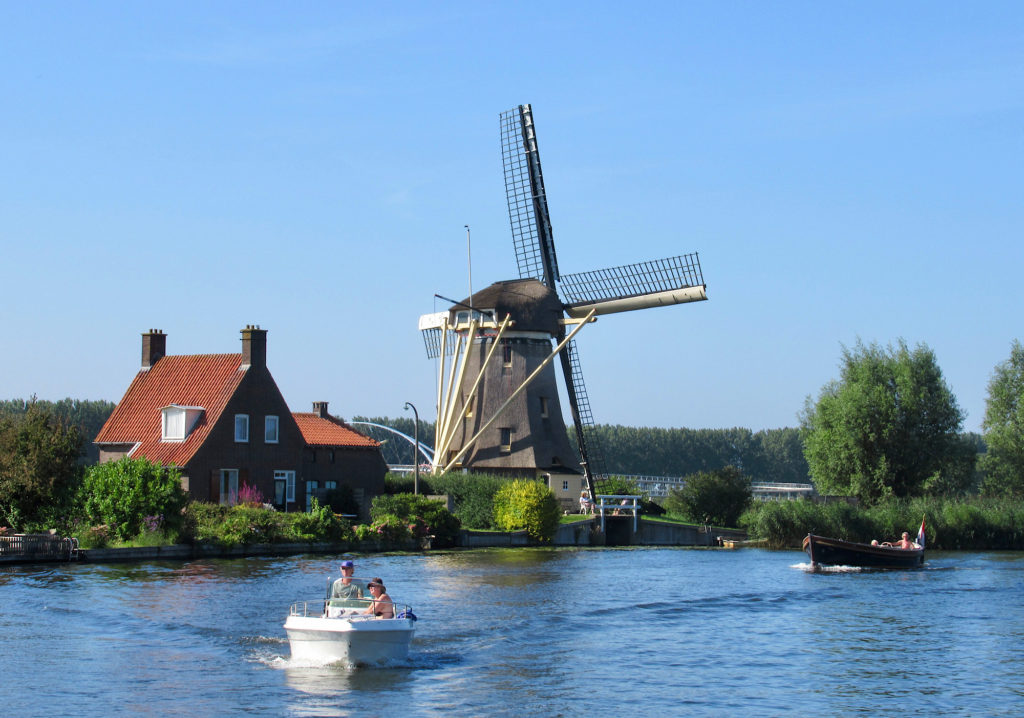
What size of boat do you need?
Boats are available for families or groups of 2 to 12 passengers. They come in a variety of layouts and cabin numbers and will most likely have a least one wet bath – combination sink, toilet and shower in one room. The larger the boat, the greater the skill needed to maneuver the vessel through the canals and in and out of marina berths. Regardless of the size of the boat, at least one person will need to be physically able to go ashore easily for the handling of lines during mooring or while in locks.
What Skills Do You Need to Self-Drive a Canal Boat?
Now that you know where to find a rental canal boat and you know what size you need, what specific skills will you need to get it out of the marina, along the canal route you’ve chosen and back again in one piece?
If you are renting a boat for a holiday trip, the rental boat operator should provide an overview of the boat systems and handling techniques as well as waterway protocol. Since the operator is obviously familiar with the boat and Holland’s canal system – from locks to bridges to where best to travel – listen carefully to what they have to say and follow their advice.
Where Can You Find Information?
Learn to read the charts and guidebooks for European waterways. They will show the location of locks and bridges, as well as details such as the clearance height for bridges and the rise/fall of the locks. Become familiar with the general instructions in the front pages of the book. Our boat came with a canal guidebook. It was in Dutch. Without Dutch-speaking friends, we’d have been in a little bit of trouble.
Most canals and waterways have speed limits, and the rental boats are designed to operate within the limit. Speeds of 4-6 km/hour was really moving. Walkers on the canal paths could sometimes keep up with the pace of our boat and through towns with bridges, they beat us every time!
Before leaving the rental company’s marina, make sure that the boat rental staff have reviewed how to:
- fill the water for your barge rental and how to hook up to shore water
- check your electrical system and hook up to shore power
- tie up the boat
- fill up with fuel (if necessary)
- operate your canal boat and have taken you out on a test drive
- use thrusters if your self-drive boat has them
- navigate a lock
What about Locks?
Hollands canals are man-made. The travel north, south, east and west. While parts of the Netherlands are flat, there are still minor changes in elevation. Locks are a way to move boat along a canal. Locks allow the water to rise or fall in a controlled manner, moving boats up or down along the canals where necessary. You can’t travel far without encountering at least one lock.
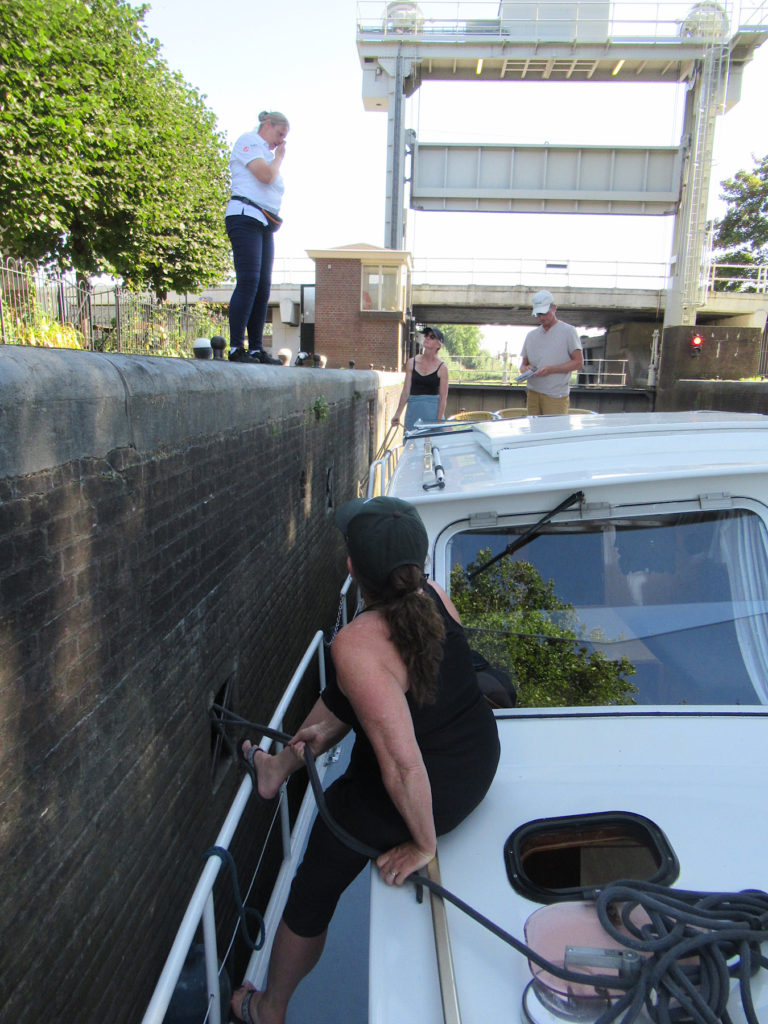
What Are the Logistics of Moving Through a Lock?
Lock keepers are present at many locks. When you approach a lock, it will either be opened or closed. If the lock gate is closed, you will have to wait until the door opens and the boats inside to leave. Wait for the signal light to turn green before making any moves. Please note that commercial barges and boats have priority at the locks. If you are waiting for a lock to open and a commercial boat arrives, they get to enter the lock first.
When it is your turn, move slowly and carefully into position. The lock keeper may tell you where to tie up as well. When we went into locks, the lock keepers all spoke Dutch. They may or may not speak English. Knowledge of the local language is going to be a boon.
Once you are in the lock and any other boats and barges are set, the lock keeper will close the gates. Once the gates are closed, water will come rushing in if you are going up or go rushing out if you are going down. Your crew will hold the ropes between the boat and the bollard on shore. This stops the boat from moving around too much in the lock and potentially hitting the walls of the lock or another boat. Once the water level has finished rising or lowering, the gates open and you can drive out. You normally leave in the order that you arrived in the lock.
Did You Know? The practical details that make locks work as they do today was developed by Leonardo da Vinci who introduced a lock chamber with two pairs of gates attached in 1495.
What about Bridges?
The Netherlands have thousands and thousands of bridges. It seemed like no two were the same. Some were high enough to drive underneath. Others were cantilevered to allow boat traffic through. Some lifted the center section straight up. There were bridges made of wood, others made of metal and more than a few constructed of concrete.
And like there is a lot of variety in styles of bridges, there is a lot of variation in how they operate. Some have a person in a booth watching the traffic and operating the bridge open and closure. Others have a remote camera where the operator might handle two or three bridges from one central location. A few require a boat crew member to push a button to signal their arrival.
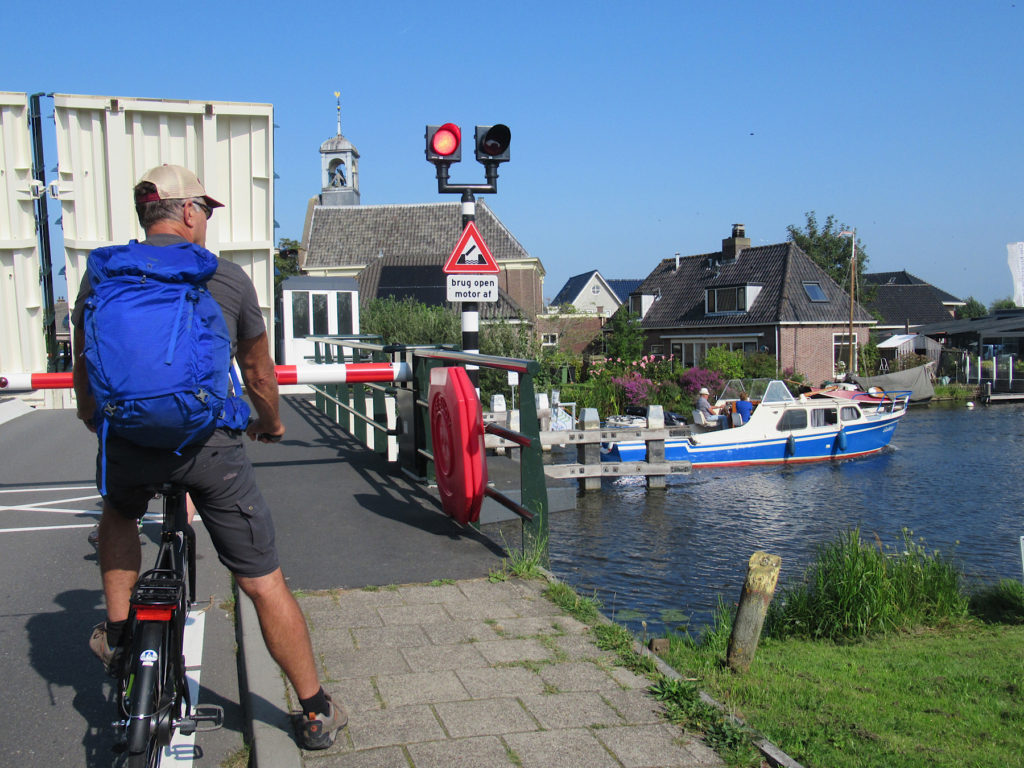
Regardless of the type of bridge and how it was operates, they always require great concentration on behalf of the captain. It is interesting trying to hold the boat in position and not bang against the sides of the canals or into other boats waiting for the bridge to open. There were cases where we waited up to 10 minutes to pass through. There are normally places to tie off while you wait if you so choose. Again, boating skills come in handy.
Once the bridge opens, usually a green light will come on indicating that you can proceed through. If there is boat traffic coming the opposite direction and they arrived first, you will have to wait until they pass before you can go. This where having a guidebook in advance of your trip and studying up on procedures ahead of time will come in handy.
How Much Will It Cost to Rent and Drive a Canal Boat?
It depends. The cost of your boat will obviously vary on the size of vessel and time of year. Shoulder season rentals can save you some money. Check several boat rental companies to find the best price for your group’s needs. In addition to the boat rental cost, you will be responsible for fuel, marina moorage and there is often a small toll at well-maintained locks and lifting bridges.
Do You Have to Stay in a Marina?
Nope. You don’t always have to stay in a marina. Moreover, your canal guidebook will list places where you can moor free of charge for a set period of time. In towns and cities, marinas offer the convenience of easy access to historic sites, restaurants and other attractions. At Gouda, for example, the marina is impressively close to the middle of the old town. Paid marinas usually have showers. Some moorage requires payment without any facilities.
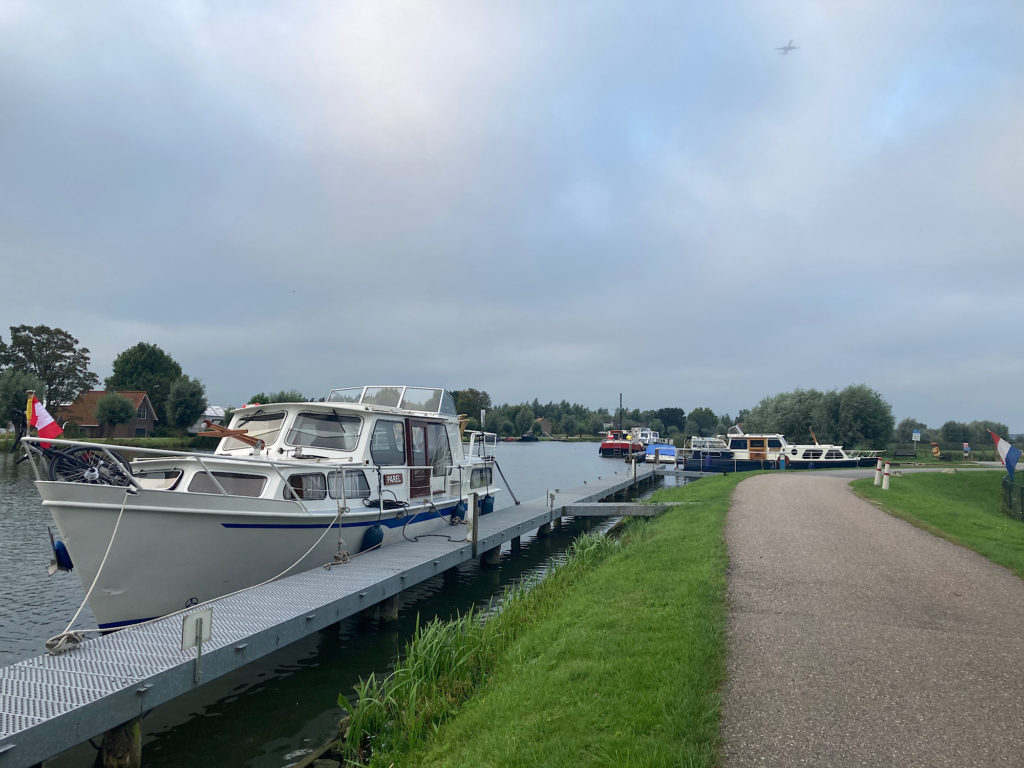
Should You Rent Bicycles to Take on Your Canal Cruise?
Absolutely. Rent bicycles from or near the boat rental company marina at the beginning of the trip. In the first place, having a bike gives you the freedom to expand your adventures. Holland is built for biking. The cycling network of signed routes allows you to venture into towns off your canal route. As a result, it allows you to explore the countryside and experience the Netherlands as many locals do.
On a practical side, it allows you to quickly get to markets to replenish your groceries or pick up any other necessities you may need. However, you will need to master the skill of loading and unloading your bike(s) on and off of your boat. In addition, you should know how to secure them properly while on the move.
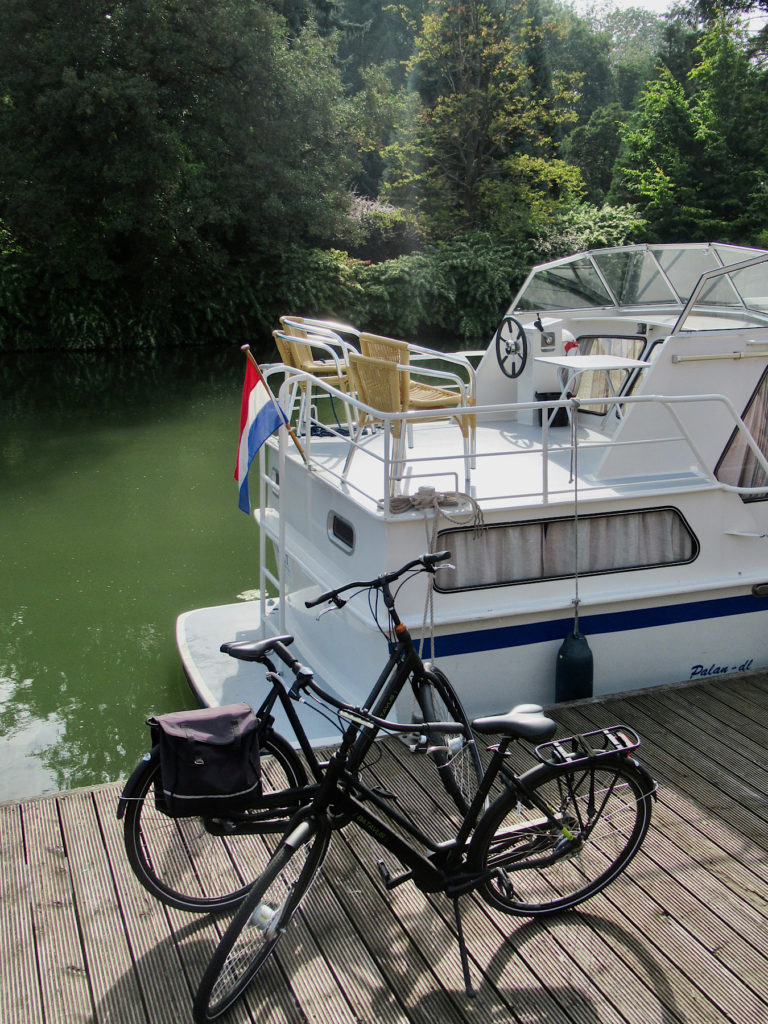
What Can You See and Do on a Self-Drive Canal Cruise?
In a word – everything. As a matter of fact, you can see and do almost everything on a self-drive canal boat holiday because the Holland’s maze of canals criss-crosses the countryside. Moreover, if you need to venture further than your bike and energy allows, simply hop on a bus or train.
Need more inspiration? Be sure to read the first in our three-part post about canal travel adventures in the Netherlands: The Perfect Boating Holiday in Holland.
With all of this in mind, let’s circle back to the beginning of this post. Should you rent a self-drive canal boat in Holland? It depends on your skill, knowledge and confidence levels. We had a steep learning curve travelling with pals who knew the ropes. That being said, if you decide after reading this that a self-drive canal cruise is a bit too much you can still always experience the joy of cruising the canals of Holland with a guided bike and barge tour.
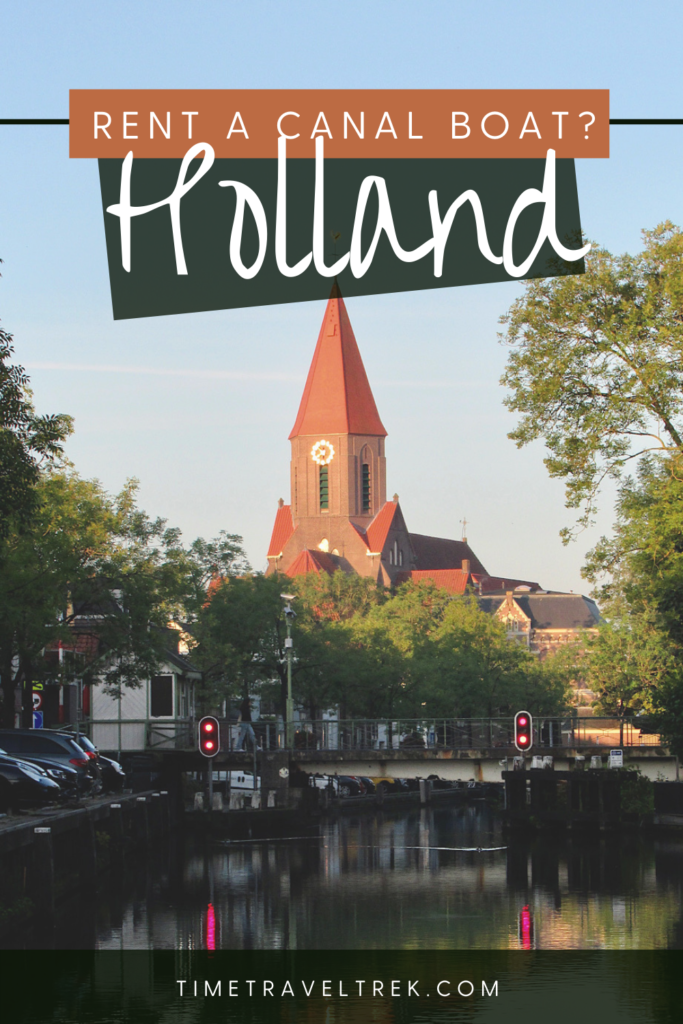
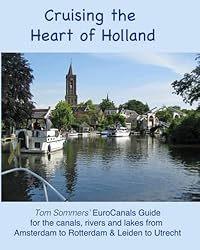
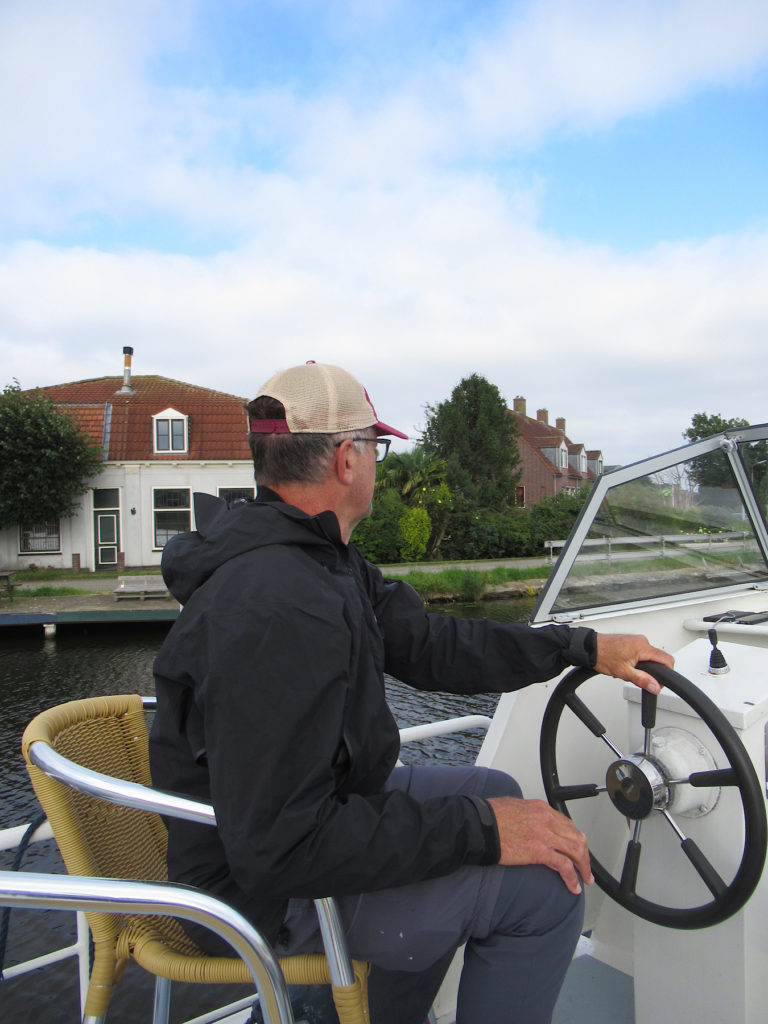

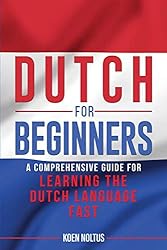
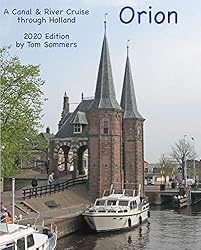

Howdy! I truly like your endeavors. Continue to share such useful stuff. Truly astonishing. Much thanks to you.
Howdy back – and thx!
Prices for boat rental
You’ll have to check through the boat company sites listed in the post as prices vary depending on time of year, size of boat, etc. Cheers, Megan
We got Tom Sommers book but I have a question… We are doing a 4 night rental from Locaboat and are hoping to make it to Utrecht the first night. We won’t check-in for the boat until around 2pm and then at least an hour to go over the operations. All charts say 3.5 to Utrecht but most bridges close at 8… are we being too ambitious?
Sorry for the delayed reply – we’ve been out for adventures ourselves over the past month! If you have experience with this kind of boat rental and operation, you might be okay. Personally, I’d give yourself more time and enjoy the journey rather than rushing to be the bridge closures on your first day.
I had no idea that renting a boat in the Netherlands was so accessible. It’s great to know that anyone over 18 can enjoy a peaceful canal journey without needing a special license, as long as they stay under the size and speed limits. Thanks for the great article!
Helping you discover new adventures + providing info on how to get outside and explore more = our goal at TimeTravelTrek.com!